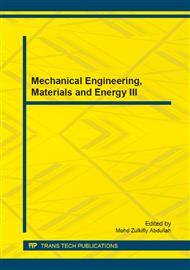p.542
p.550
p.555
p.559
p.563
p.569
p.574
p.578
p.583
Design Optimization of BAW Micro-Piezoelectric Disk Gyroscope through Finite Element Method
Abstract:
Micro-piezoelectric disk gyroscope (MPDG) is a miniaturized inertial sensor that uses a pair of degenerate bulk acoustic wave (BAW) modes to detect the angular velocity. To improve the performance of MPDG, there should be an effective method to design this resonant structure. In this paper, the frequencies of drive and sense mode are obtained when the radius of the MPDG varies from 2.2mm to 3.0mm and the thickness of the MPDG varies from 0.8mm to 1.5mm through finite element analysis (FEM). Using a fitting method, the empirical formulae with an excellent fit are induced to predict the influence of the radius and the thickness of the MPDG on the drive and sense mode frequencies. Based on these empirical formulae, the mode-matched equations are introduced. Moreover, the structure parameter of support pin and electrodes are optimized with FEM. These results can be used to design a piezoelectric disk gyroscope.
Info:
Periodical:
Pages:
563-566
Citation:
Online since:
December 2013
Authors:
Price:
Сopyright:
© 2014 Trans Tech Publications Ltd. All Rights Reserved
Share:
Citation:


